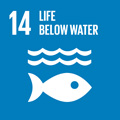- Docente: Stefano Medas
- Credits: 6
- SSD: L-ANT/09
- Language: Italian
- Teaching Mode: Traditional lectures
- Campus: Ravenna
- Corso: First cycle degree programme (L) in Cultural Heritage (cod. 9076)
-
from Nov 08, 2024 to Dec 18, 2024
Learning outcomes
The course aims to introduce students to the main topics characterising the study of changes in the relationship between man and the environment, able to produce different landscapes in different historical periods. It is thus intended to provide students with the necessary tools to understand these dynamics, through an integrated use of sources: from the reading of ancient texts and archaeological sources, to the study of physical geography, also with the aid of modern cartographic (GIS) and diagnostic (Remote Sensing) analysis methodologies. Particular emphasis will be placed on the study of the urban landscape.
Course contents
The course aims to provide the tools for understanding the ancient coastal landscape and its evolution over time, in its relationship with the practice of navigation, the conception of marine space, maritime and inland waterways, the environment and geography.
The first part of the course focuses on a general introduction on the evolution of coastal landscapes and its significance in relation to human settlement and navigation. Will then be explored the topic of lagoon landscapes, as areas of contact between the world of maritime and inland navigation; areas where not only trade routes but also nautical traditions meet.
The second part will focus on ancient navigation, its relationship with the natural environment, on the 'construction' of a geographical system based on the experience of mariners and on the perspective with which they perceived the coastal landscape. The analysis of those particular ancient documents known as periploi will then be addressed, also in function of a comparative reading with portulans, and the elements for the study of ancient seamanship will be provided, with reference to historical, archaeological and ethnographic data.
Readings/Bibliography
For students attending lectures
For the first part of the course, students will refer to the notes taken during the lectures. They are also required to read Strabo, Geography, Book V, Chapter 1 (paragraphs 1-12), in Italian or translated from Greek in your own language.
Students are required to study one of the following texts of their choice:
Michel Gras, Il Mediterraneo nell’età arcaica, Fondazione Paestum, Paestum 1997.
Federica Cordano, La geografia degli antichi, Laterza, Roma-Bari 2002.
Stefano Magnani, Geografia storica del mondo antico, Il Mulino, Bologna 2003.
Jean-Marie Kowalski, Navigation et géographie dans l'Antiquité gréco-romaine. La terre vue de la mer, Picard, Paris 2012.
Carlo Tosco, Il Paesaggio come Storia, il Mulino, Bologna 2017.
Stefano Medas, Nautica antica. Itinerari nel mondo della navigazione tra storia, archeologia ed etnografia, <<L’Erma>> di Bretschneider, Roma 2022 (NOTE: this text cannot be used if it has already been used for Maritime Archaeology exam).
For non-attending students
In addition to studying one of the above texts and the chapter of Strabo's Geography, non-attending students should prepare themselves on the following articles:
G. N. Bailey, Early Seafaring and the Archaeology of Submerged Landscapes, in Eurasian Prehistory, 10, 2013, pp. 99-114.
Carlo Beltrame, Imbarcazioni lungo il litorale altoadriatico occidentale in età romana. Sistema idroviario, tecniche costruttive e tipi navali, in Antichità Altoadriatiche, 46, 2001, pp. 431-449.
Enrico Felici, Le lagune nel Mediterraneo antico. Materiali per un atlante, in L'Archeologo subacqueo, XXIX, n.s., 75, 2023, pp. 1-65 (open access journal).Guido Rosada, Marco Zabeo, …stagna…inrigua aestibus maritimis… sulla laguna di Venezia ovvero su un comprensorio a morfologia variabile, in Histria Antiqua, 21, 2012, pp. 241-262.
Stefano Medas, Le vie d’acqua nell’Italia settentrionale. Il paesaggio della navigazione interna e le imbarcazioni, tra antichità e tradizione, in F. Carbotti, D. Gangale Risoleo, E. Iacopini, F. Pizzimenti, I. Raimondo (a cura di), Landscape 3: una sintesi di elementi diacronici Uomo e ambiente nel mondo antico: un equilibrio possibile?, Oxford 2023, pp. 79-102 (Archaeopress, Access Archaeology).
Teaching methods
Lectures with the support of images and commented reading of passages from ancient and modern texts.
Attendance at lectures, which also are held through interaction and active participation in the study topics, is recommended.
Students with particular interests or who wish to study specific topics in depth may request bibliographical informations from the lecturer and, if necessary, agree on an alternative text to those indicated.
Students who are affected by learning disability (DSA) and in need of special strategies to compensate it, are kindly requested to contact the Teacher, in order to be referred to the colleagues in charge and get proper advice and instructions.
Assessment methods
The examination is performed by means of an oral test, through which basic knowledge and correct understanding of the topics addressed during the lectures and those contained in the texts will be verified. The ability to critically discuss and argue problems will then be tested, as well as the quality of the exposition and the ability to organise a well-structured logical and formal discourse.
The final assessment is based on the student's general level of knowledge, his or her critical capacity and autonomy in interpreting the problems, the exposition logic and clarity, and active participation in the lessons. For non-attending students, particular attention will be paid to the ability in using bibliographical tools and, through these, to the ability in arriving at a critical awareness of topics and problems, autonomously and not mnemonically. In summary, the following principles will be adopted:
- not-sufficient grade: lack of basic knowledge and inability to formulate correct interpretations of the topics discussed in class and the text(s) studied;
- grade sufficient (18-22): possession of basic knowledge; interpretation mostly correct, but developed with inaccuracies and little autonomy.
- good grade (23-27): possession of basic knowledge at an intermediate level, acquired critically and not mnemonically; interpretation fully correct, but not always precise and not always developed autonomously.
- excellent grade (28-30 cum laude): high level of basic knowledge and content developed during the lessons; correct interpretation of problems; topics explained with precision and autonomy; excellent oral expression ability.
Teaching tools
Images, maps, texts.
Office hours
See the website of Stefano Medas
SDGs



This teaching activity contributes to the achievement of the Sustainable Development Goals of the UN 2030 Agenda.
